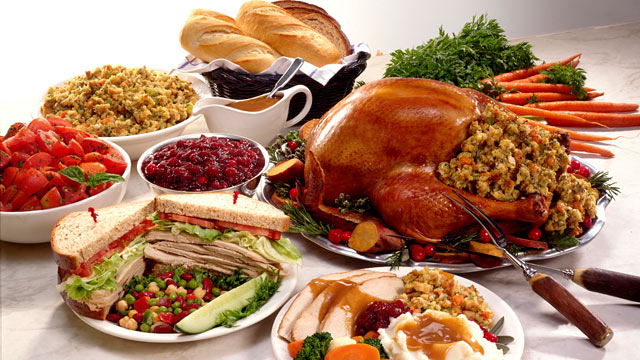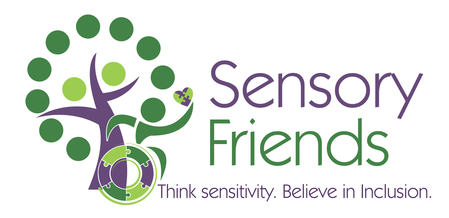
- Meet as a family to review and take note of the things that may upset your child and trigger undesirable behaviors. Think about the warning signs your child exhibits just before an episode. Then think of things that have worked for preventing an episode in the past. Make note of the things that make him or her happy, this could be songs, toys, games, or anything that might help to keep him or her calm. Create a plan that assigns a small role for every member of the family to assist with keeping your child calm (if appropriate).
- Try to keep in mind that many of our children with special needs rely on their daily routines. They like to eat at their normal times and they know exactly when that is. On Thanksgiving day, many families either eat dinner as early as two in the afternoon, or as late as seven in the evening. If your child will sit at the dinner table, have him or her nibble on something desirable until their scheduled meal-time.

- Please remember that Thanksgiving dinner has many foods your child may have never tried or seen before. If turkey, ham, or green bean casserole isn’t appetizing for your child, then be sure to bring something they will eat and enjoy during mealtime. It’s wonderful to introduce new foods to your child, but it isn’t fair to force them to eat something they’ve never tried before, or don't like.
- Practice and review social skills. Learn about what level of social skills your child is most comfortable trying. Try not to force your child to shake hands or make eye contact, this is not easy for many people without disabilities. Even if your child is only comfortable with just a tap on the hand, this is perfectly acceptable for a friendly greeting.
- If your child is anything like my son when it comes to pets, he or she may be petrified of dogs or other animals. If you’re going to someone’s home for dinner, call in advance and ask if they have pets. If they do, kindly ask if they wouldn’t mind putting their dogs in another room while you’re there. This will help to decrease episodes of anxiety exponentially.
- Ask your host if they have a room or area that your child can use for calming if things get too overwhelming for them. If not, sometimes going for a walk around the block and taking a break from the overwhelming crowd helps.
- Thanksgiving festivities include watching the parade, tons of eating, and watching football. Odds are these things won’t be peak the interests of our kids, so please be sure to bring your child’s favorite comfort items (toy, stuffed animal, ipad, etc.). Remember to bring headphones, if your child can wear them.
- Review Thanksgiving happenings by using social stories, picture schedules, or just create a timeline of what to expect with printed pictures off the internet.
- It's customary for many to introduce themselves and say grace together at the table. Some hosts may request a brief introduction and mention one thing they are grateful for (we do this in our home). Review ways of expressing gratitude with your child. What are the things that truly matter to them? Who do they love? How can they express gratitude for the things they have? Using pictures of the people they love and the items they cherish is a great way to include them in expressing gratitude during this Thanksgiving activity.
- If you’re hosting a Thanksgiving dinner for family members with disabilities and you need some ideas, please see this article: 5 Tips on How to Plan an Inclusive Gathering.
This post includes affiliate links to products. We may receive a commission if you purchase products from this site at no additional cost to you.




 RSS Feed
RSS Feed